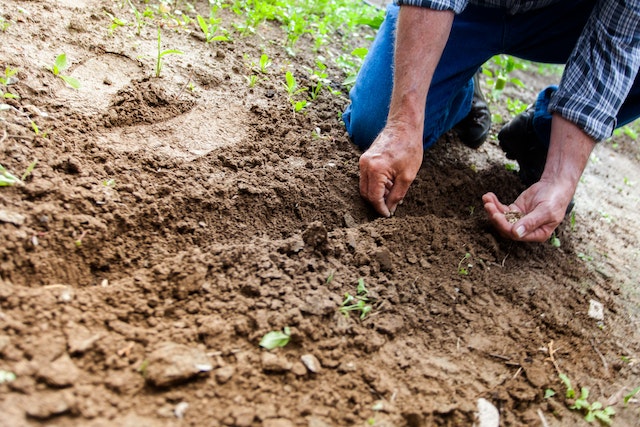Tomatoes are a popular and rewarding vegetable to grow at home. They are relatively easy to grow and require minimal equipment and resources. In this article, we will explore the steps required for planting tomatoes at home.
Step 1: Choose the Right Time to Plant
The first step in planting tomatoes is to choose the right time to plant. Tomatoes are typically planted in the spring after the danger of frost has passed. The soil temperature should be at least 50°F (10°C) for the seeds to germinate. If you are planting seedlings, wait until they have at least two sets of true leaves before transplanting them outdoors.
Step 2: Choose a Suitable Location
Tomatoes thrive in a sunny location with well-drained soil. Choose a spot with at least 6 hours of direct sunlight per day. If you live in a hot climate, consider providing some shade during the hottest part of the day to prevent the plants from becoming stressed.

Step 3: Prepare the Soil
Tomatoes prefer a soil pH between 6.0 and 7.0. Amend your soil with organic matter, such as compost or well-rotted manure, to improve soil structure and fertility. You can also add a slow-release fertilizer to the soil before planting to provide nutrients for the growing plants.
Step 4: Plant the Tomatoes
Dig a hole that is twice the diameter of the pot the tomato plant came in and slightly deeper than the root ball. Place the plant in the hole and gently tamp the soil around it. If you are planting multiple tomato plants, space them at least 18 inches apart to allow room for growth.
Step 5: Provide Support

Most tomato varieties require support as they grow. Install a stake, trellis, or cage at the time of planting to avoid damaging the plant later on. As the plant grows, tie the stem to the support structure with a soft, flexible material like twine or garden tape.
Step 6: Water the Plants
Tomatoes require consistent moisture to thrive. Water the plants deeply once a week, or more frequently if the weather is hot and dry. Water the plants at the base to prevent water from getting on the leaves, which can increase the risk of disease.
Step 7: Mulch Around the Plants
Cover the soil around the plants with a layer of mulch to help retain moisture and suppress weeds. Use organic mulch like straw or shredded leaves, and avoid using plastic or inorganic materials that can heat up and damage the plants.
Step 8: Fertilize Regularly
Tomatoes are heavy feeders and require regular fertilization throughout the growing season. Use a balanced fertilizer with equal amounts of nitrogen, phosphorus, and potassium. You can apply fertilizer every 3-4 weeks, or as directed on the product label.
Step 9: Monitor for Pests and Diseases
Keep an eye out for common tomato pests and diseases, such as aphids, tomato hornworms, and early blight. Promptly treat any issues that arise to prevent them from spreading. You can use organic pest control methods like neem oil or insecticidal soap, or consult with a professional for more severe infestations.
In conclusion, planting tomatoes at home requires a few basic steps. Choose the right time and location, prepare the soil, plant the tomatoes, provide support, water regularly, mulch around the plants, fertilize regularly, and monitor for pests and diseases. With a little care and attention, you can enjoy a bountiful harvest of delicious, home-grown tomatoes.







